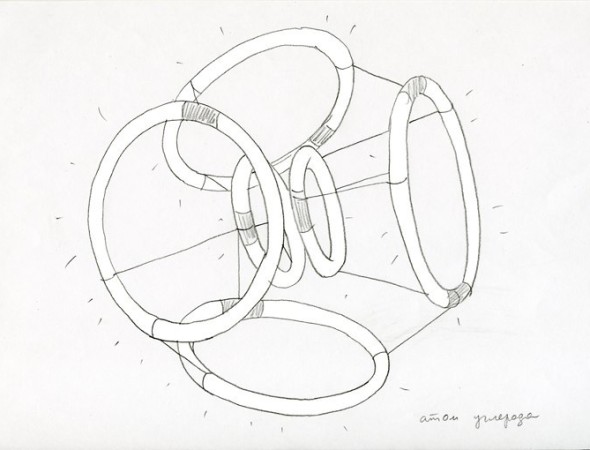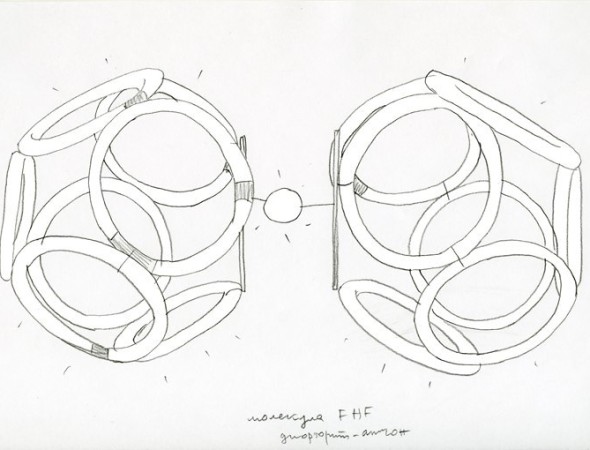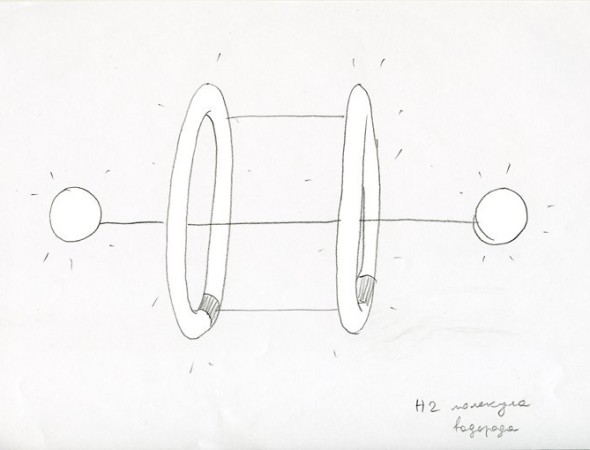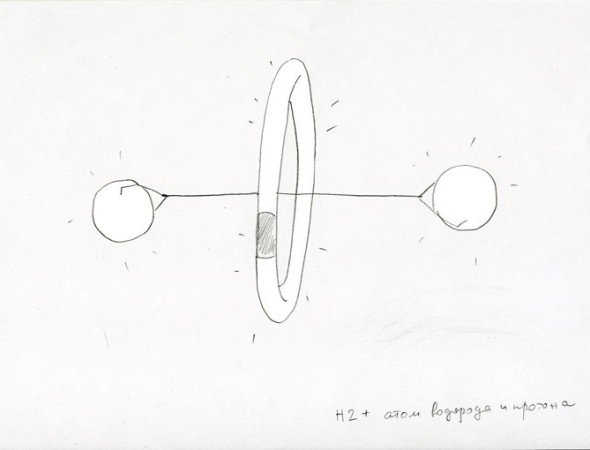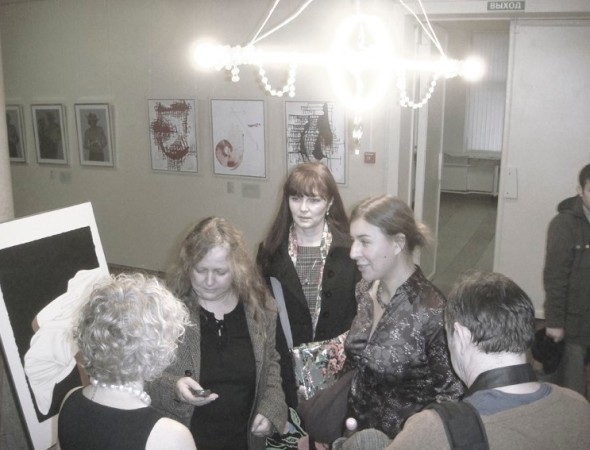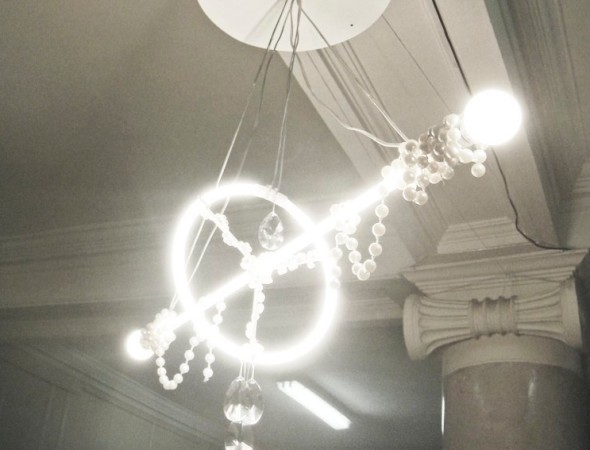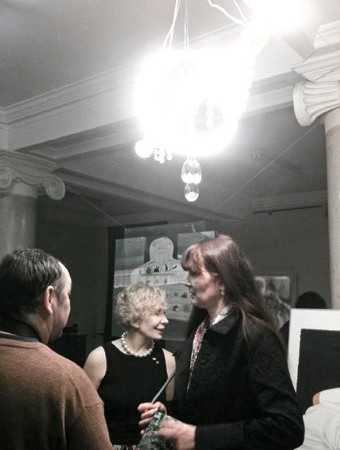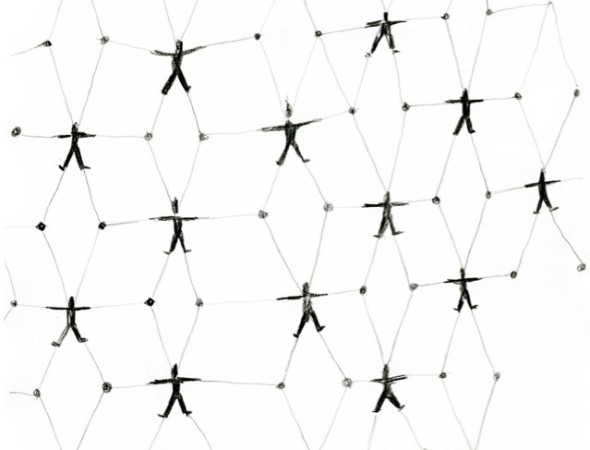Nano
Татьяна Антошина
“Кольцегранный микромир. Атомы водорода и протон”. Люстра, смешанная техника, 2011. Выставка «Женское нано», Выставочный зал РГГУ, 2011.
Польский ученый Збигнев Огжевальский открыл в 1956 году кольцегранный микромир, создав волноводную модель элементарных частиц. Модель Огжевальского предполагает новое философское осмысление устройства микромира.
Открытия наук 20 века значительно расширило границы существования современного человека. Не только увиденное в микроскоп и телескоп, но и более мелкое и удаленное становится доступным пониманию человека, а со временем войдет в обыденную жизнь.
Воображение художника осваивает новые пространства мира, создавая, таким образом, новую реальность. Традиционная роль женщины – заботиться о доме, а главное – делать нереальное – реальным, конкретным и образным. Два светящихся атома водорода, и протон, вращающийся вокруг оси их соединения – превращаются в люстру для жилища 3 тысячелетия.
Tatiana Antoshina
Ring-Faceted Microworld. Atoms of Hydrogen and a Proton. Chandelier, mixed media, 2011. Female Nano, Exhibition Hall of the Russian State University for the Humanities, 2011.
Zbigniew Ogrzewalski discovered the ring-faceted microworld in 1956 creating the waveguide model of elementary particles. The Ogrzewalski model presupposes a new philosophical conceptualization of the microworld structure.
The 20th century scientific discoveries considerably expanded the boundaries of life for the modern man. Not only the world seen in the microscope and the telescope, but also the smaller and more distant objects are now comprehensible for man, and will soon be a part of everyday life.
Artistic imagination settles new spaces of the world, creating thus a new reality. The traditional role of the woman is that of a caregiver and a homemaker, and, what is more important, to make the unreal become real, concrete and figurative. Two shining hydrogen atoms and a proton circling around their combination axis form a chandelier for the house of the 3rd millennium.
